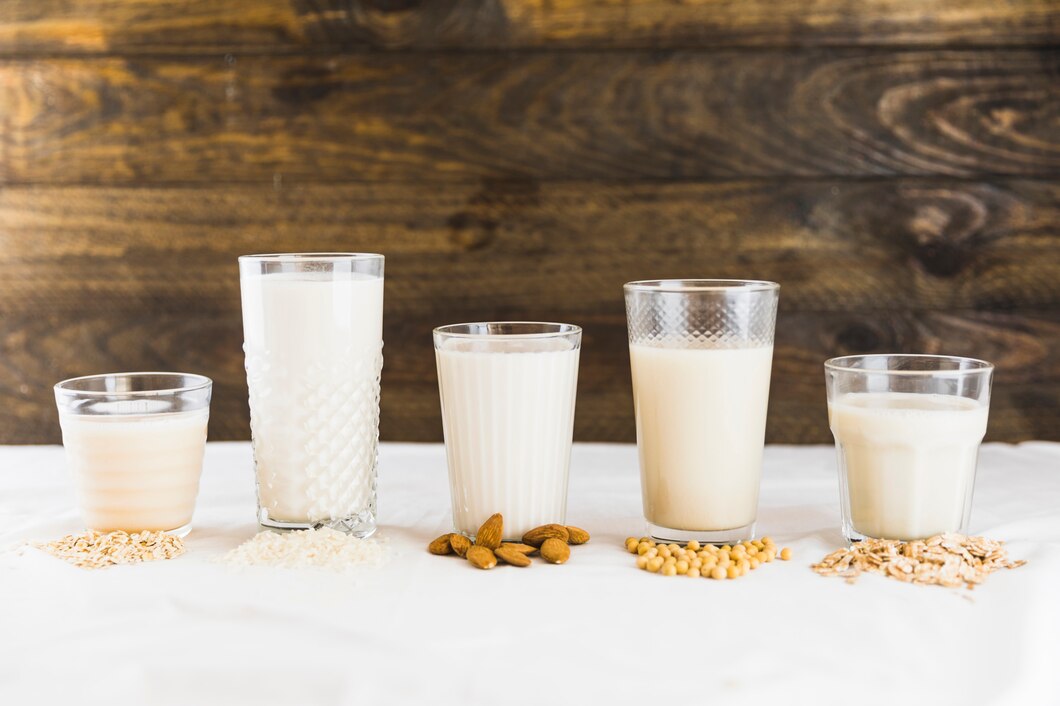Baking without traditional dairy milk doesn’t mean sacrificing flavor, texture, or moisture in your favorite treats. With the growing popularity of plant-based milks, there’s a wide array of options to choose from, each offering its unique characteristics. Here are some tips and tricks to ensure success when baking with plant-based milks.
1. Understand the Milk Varieties:
Different plant-based milks bring distinct flavors and textures to your baked goods. Almond milk tends to be subtly nutty, while coconut milk adds richness. Soy milk is often considered a versatile option with a creamy consistency. Experiment with various plant-based milks to find the one that complements your recipe.
2. Choose the Right Type:
Opt for unsweetened and unflavored plant-based milks when baking. This allows you to have better control over the sweetness and overall taste of your final product. Sweetened or flavored milks might alter the intended flavor profile of your baked goods.
3. Check Consistency:
Plant-based milks can vary in thickness. For recipes that require a thicker milk, like in custards or creamy sauces, choose a richer option such as coconut or cashew milk. For lighter batters, almond or rice milk might be more suitable.
4. Consider Fat Content:
Dairy milk contains fats that contribute to the texture and richness of baked goods. When using lower-fat plant-based milks, consider compensating with additional fats such as vegan butter or coconut oil to maintain the desired texture and flavor.
5. Adjust for Nut Allergies:
For those with nut allergies, almond or cashew milk might not be suitable. Opt for nut-free alternatives like soy, oat, or rice milk, ensuring that your baked goods are safe for everyone to enjoy.
6. Beware of Curdling:
Certain plant-based milks, particularly those high in acidity like almond or soy milk, may curdle when mixed with acidic ingredients like lemon juice or vinegar. To prevent curdling, mix these ingredients gradually and at room temperature.
7. Temperature Matters:
When substituting plant-based milk for dairy milk, ensure that the milk is at room temperature. Cold milk can affect the texture of ingredients like fats, making it challenging to achieve the desired consistency in your baking.
8. Experiment with Homemade Milks:
Consider making your own plant-based milks at home for a fresher and more personalized touch. Almond, oat, and cashew milks are easy to make and allow you to control the ingredients, ensuring a clean and pure flavor in your baked goods.
9. Pay Attention to Flavor Combinations:
Certain plant-based milks pair exceptionally well with specific flavors. For instance, coconut milk can enhance tropical or chocolatey notes, while almond milk complements vanilla and nutty flavors. Experimenting with these combinations can elevate the taste of your creations.
10. Be Mindful of Allergen Labels:
When buying commercial plant-based milks, carefully read labels, especially if allergies are a concern. Some varieties may contain added ingredients like gums or stabilizers, which can impact the texture of your baked goods.
Baking with plant-based milks opens up a world of possibilities for delicious, cruelty-free treats. By understanding the characteristics of different plant-based milks and experimenting with various options, you can ensure success in your vegan baking endeavors. So go ahead, let your creativity flow, and savor the delightful results of plant-powered sweetness.








